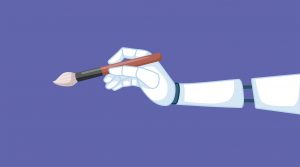Coding with a twist: combining art and technology for kids
27/07/23
Coding is an essential skill for children to learn – it empowers them to think critically, solve problems, and explore their creativity. However, coding isn’t just about numbers and algorithms. There’s a fascinating realm where coding and art intersect, enabling kids to express their creativity through digital art, animations, and interactive projects. Here we look at some of the exciting coding platforms that bridge the gap between art and technology, providing kids with a unique outlet for their creativity.

The first platform that we are going to explore is p5.js. p5.js is a powerful JavaScript library specifically designed for creative coding. Firstly, it aims to make coding accessible and inclusive for artists, designers, educators, beginners, and anyone with a creative spirit. With p5.js, children can unleash their imagination and turn their ideas into reality. Then, the library offers full drawing functionality, allowing kids to create stunning visual artworks. Moreover, p5.js extends beyond traditional canvases, enabling them to integrate HTML5 objects like text, video, webcam, and sound into their creations. By treating their browser page as a sketch pad, kids can create interactive and multimedia experiences that transcend the boundaries of traditional art.
Unleashing coding creativity: Tynker.
Next on our list is Tynker, the #1 coding programme for kids and teens, which combines coding with a story-based learning approach. Tynker offers a seamless transition from block-based coding challenges to real-world text-based languages like JavaScript and Python. With over 70 award-winning coding courses and 5,000 lessons, Tynker provides a comprehensive learning path suitable for students of all ages and skill levels. From game-like courses to personalised coaching sessions, Tynker nurtures kids’ coding creativity, guiding them towards coding certification and expanding their horizons to real-world applications such as web development and data science.

Finally, the third platform that we are going to look at today is Artbotics – an innovative programme that introduces students to art, computer science, and robotics through the creation of interactive, kinetic sculptures. It provides a versatile platform for students of various age levels. Additionally, by blending art, technology, and coding, Artbotics allows kids to bring their imagination to life in the form of captivating and dynamic exhibits. Artbotics offers a curriculum that fosters creativity, critical thinking, and hands-on learning.

Supporting EU Code Week goals
These coding platforms, along with many others, align perfectly with the overarching objective of EU Code Week. In fact, they aim to get kids coding and equip them with the digital skills they need for the future. By combining art and technology, these platforms engage children’s creative minds, nurturing their passion for coding while fostering their artistic expression. The integration of coding and art encourages interdisciplinary thinking, enabling kids to explore new possibilities and become well-rounded digital creators.


